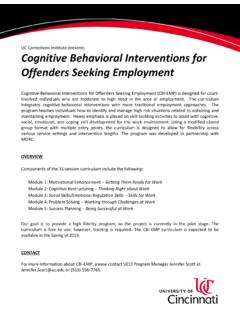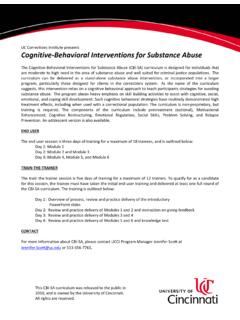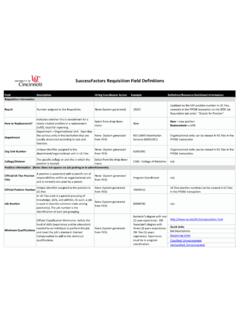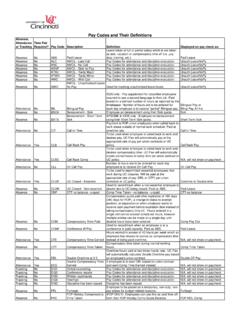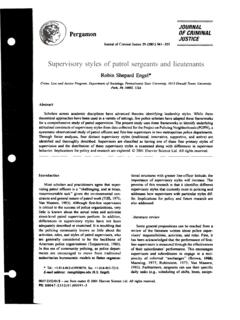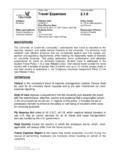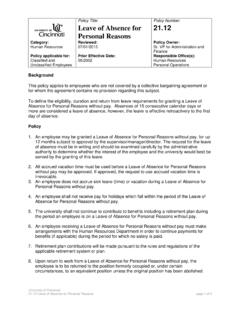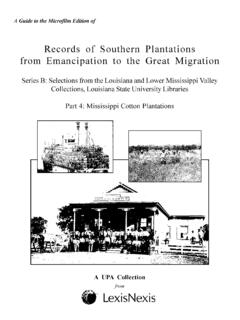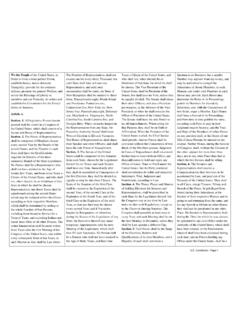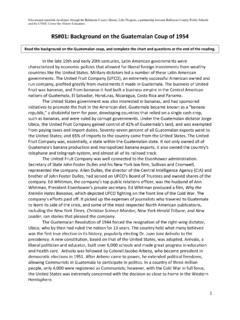Transcription of Slavery and the American Constitution
1 Slavery and the American ConstitutionSlavery on Caribbean plantations Often owned by absentee British owners who also were members of British parliament and very rich This approach was coupled with the increasingly acceptable attitude that money making was acceptable to the elite Some island populations were 90% slaves Slave rebellions became the greatest concern of non-slave inhabitants and British and other owners addressed this in part by getting out of town White and mixed-race overseers were the plantation managers Absentee ownership became a model for South Carolina low country rice planters in the 18thand 19thcentury This arrangement separated the owners from the slaves making Slavery and its cruelties remote and more pervasive Freeman also owned slaves on smaller sugar plantations Caribbean islands produced so much income for British owners and government that one half of the British troops in America in 1788 were shipped to the Caribbean after the 1788 American -French treaty for protection against the French fleet British sugar exports exceed the value of American exports West Indies also became a critical export market from British America of food and ship suppliesTake AwaysMarket demand for slave produced products caused creation and expansion of slaveryRacism led to enslavement of AfricansSlavery was back end justified by tradition and sense of cultural superiorityWestern Slavery grew out of technological developmentSlavery
2 Was a culturally accepted practice in Europe and the New WorldSlavery sanctioned by state and moral authoritiesSlavery without competition from non slave laborSlavery was a major contributor to the growth of the new worldSlavery in colonial North America Most slaves who were brought or kidnapped to theThirteen British colonies theEastern seaboardof what later becamethe United States were imported from theCaribbean, not directly fromAfrica. South Carolina became source for food for Caribbean IslandsIndigenous peoples were also enslaved in the North American colonies, but on a smaller scaleIndian slaverylargely ended in the late eighteenth century though the enslavement of Indigenous people did continue to occur in theSouthern statesuntil theEmancipation ProclamationBy the time of the American Revolution, Native Americans and Africans were enslaved throughout the colonies.
3 Working on farms as laborers, in cities as artisans and mechanics (New York city had a large slave population) and in the south on tobacco, rice and indigo servitude failed due to management, investment and alternative employment problemsBritish in the Revolutionary War attempted strategic use of slavesAmericans waivered on using slaves in the Continental ArmySlavery and the ConstitutionWhy this is important?The extent of the Constitution s effect on Slavery and state s rights would be of continual debate from 1787 until the coming of the Civil War in at the time of the American Revolution and Constitutional Convention of 1787 was firmly established in the five southern states from Maryland to Georgiamore than a trivial presence in most of the othersEach colony before the Revolution had an accumulated body of slave law that did not so much establish Slavery as acknowledge its presence, sanction it, and regulate its conduct.
4 Slavery had been part of the social and economic climate of the colonies for over 100 years before Slave Codes were colony legislation addressing the legal status of slaves, including punishment, inheritance, damages, manumission, sale, and other legal aspects of slaveryDe facto colonial self-government had also been in effect for about 75 yearsThe Declaration of IndependenceA defense or reason for the July 2, 1776 declaration vote of the Continental CongressThomas Jefferson, Virginia Delegate to the Continental Congress and part of the Declaration drafting committeeJefferson wrote The Declaration of Independence with prior documents before him and in the Lockean tradition of natural rights and freedoms, including property Locke 1632-1704 The basis of legitimate government was the consent of the governed, not divine authority granted to monarchs by GodFreedom was the natural pre-government state of all reasonable men.
5 To Locke this was a self evident truth People gave up designated freedoms to live under a government under a social contractThe duty of that government is to protect the natural rights of the people, which Locke believed to includeLIFE, LIBERTY, AND PROPERTYIf the government should fail to protect these rights, its citizens have the right to overthrow that governmentThis idea deeply influencedTHOMAS JEFFERSONas he drafted theDECLARATION OF INDEPENDENCES lavery for Locke was the continuation of Just war between the slave and masterThe Declaration of Independence (1776)Preamble the basis for the Declaration We hold these truths to be self-evident, that all men are created equal, that they are endowed by their Creator with certain unalienable Rights, that among these are Life, Liberty and the pursuit of Happiness.
6 Jefferson s Deleted Slavery PassageHe [King George III] has waged cruel war against human nature itself, violating its most sacred rights of life and liberty in the persons of a distant people who never offended him, captivating & carrying them into Slavery in another hemisphere or to incur miserable death in their transportation piratical warfare, the opprobrium of infidel powers, is the warfare of the Christian King of Great to keep open a market where Men should be bought & sold, he has prostituted his negative for suppressing every legislative attempt to prohibit or restrain this execrable the achievement of independence, Slavery remained what it had been before -an institution historically antecedent to the laws governing it and legally the creature of local (now state) authoritySlaves numbered about 500,000 in 1780, constituting a little more than one-sixth of the national the South, two persons out of every five were slaves.
7 Slavery a distinctive element in the southern social order; the peculiar institution. oThe slave production of staple crops dominated southern agriculture and suited the development of a national market economy with an otherwise great labor played such a vigorous part in the expansion of the American frontier that slaves already comprised about one-sixth of the population living in Kentucky and the Southwest. oHowever, Slavery was an institution under severe scrutiny, both as a matter of conscience and/or as a matter of public interest. oMany Americans found it difficult to square slave-holding holding with the principles of Christianity, and the Preamble of the Declaration of IndependenceThe Articles of ConfederationTheArticles of Confederation, formally theArticles of Confederation and Perpetual Union, was an agreement among the13 original statesthat served as the first Constitution .
8 This was the Revolutionary War Constitution .The Articles, inter alia, addressed the basis of contributions (taxes) to the Continental Congress and 13 colonies. Tax or contribution basis was on value of property At one time it was proposed that property be substituted with population. Slaves were to count as 3/5ths of a person. Why? Never enacted Constitution would replace the Articles from the need for power and order: Power through stable unity in a central government with taxation power Order through a Constitution addressing added governing issuesBefore the Constitutional ConventionThe Western landsoAmericans of the Revolutionary Era regarded the "West" as those lands between the Appalachian Mountains and theMississippi River.
9 OThe area beyond the Mississippi was then largely unexplored and in the possession of foreign powers. The West had been the object of much recent contention; Britain and France bitterly struggled for control of the area during theFrench and Indian War(1754-1763). oIn the aftermath of French Indian War, Britain attempted to halt the westward movement of American settlers in theProclamation of 1763. oThis halt was attempt at British cost reduction and the British strategy of the 1780s, seven of the 13 original states had enunciated claims to areas in the West. These "landed" states had a great potential advantage over the six "landless" states. Assumed that the future sale of western lands would enrich the landed states and possibly allow them to operate without any form of taxation.
10 The landless states feared that they would lose residents and dwindle into claims to the western lands rooted in the vague wording of old colonial charters. oClaims often overlapped one another, pitted one state's interests against land claim states were Virginia, Connecticut, Massachusetts, New York, North Carolina, South Carolina and Georgia. oThe pre Constitution Congress successfully worked to induce the states to surrender control of their western land claims to the central ceding of western lands by the states was accompanied by a series of laws passed by the Articles Congress to organize the areas and prepare them for statehood. These measures included theGreat Northwest Ordinancein 1787oThe Northwest Ordinance of 1787 among other things prohibited Slavery in the northwest territoryoThe ordinance passed with little resistance from the southern states as they did not want a competitor for the rice, tobacco and cotton grown by them in ConstitutionThe framers of the Constitution , dealing with Slavery as an incidental but troublesome circumstance.


